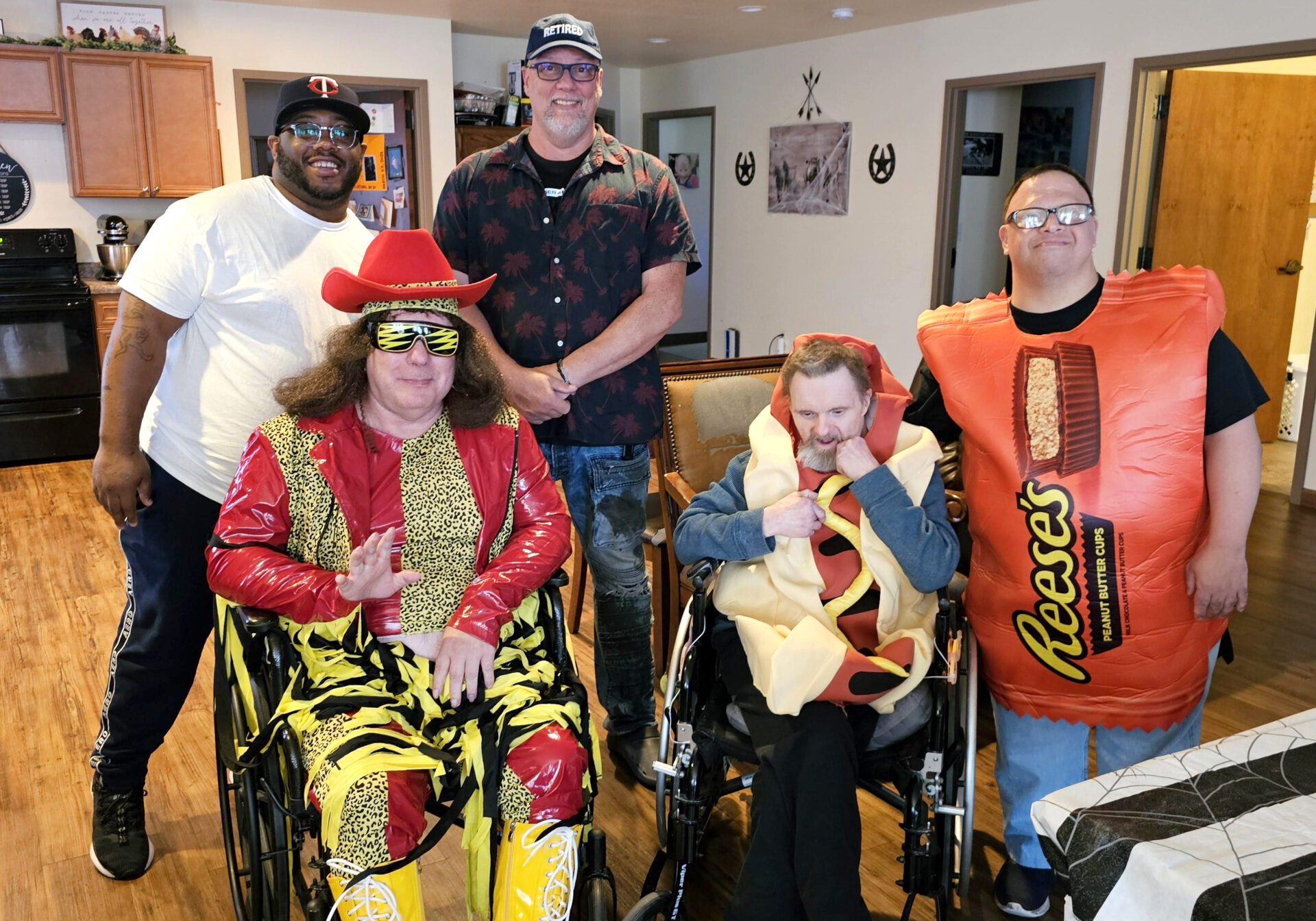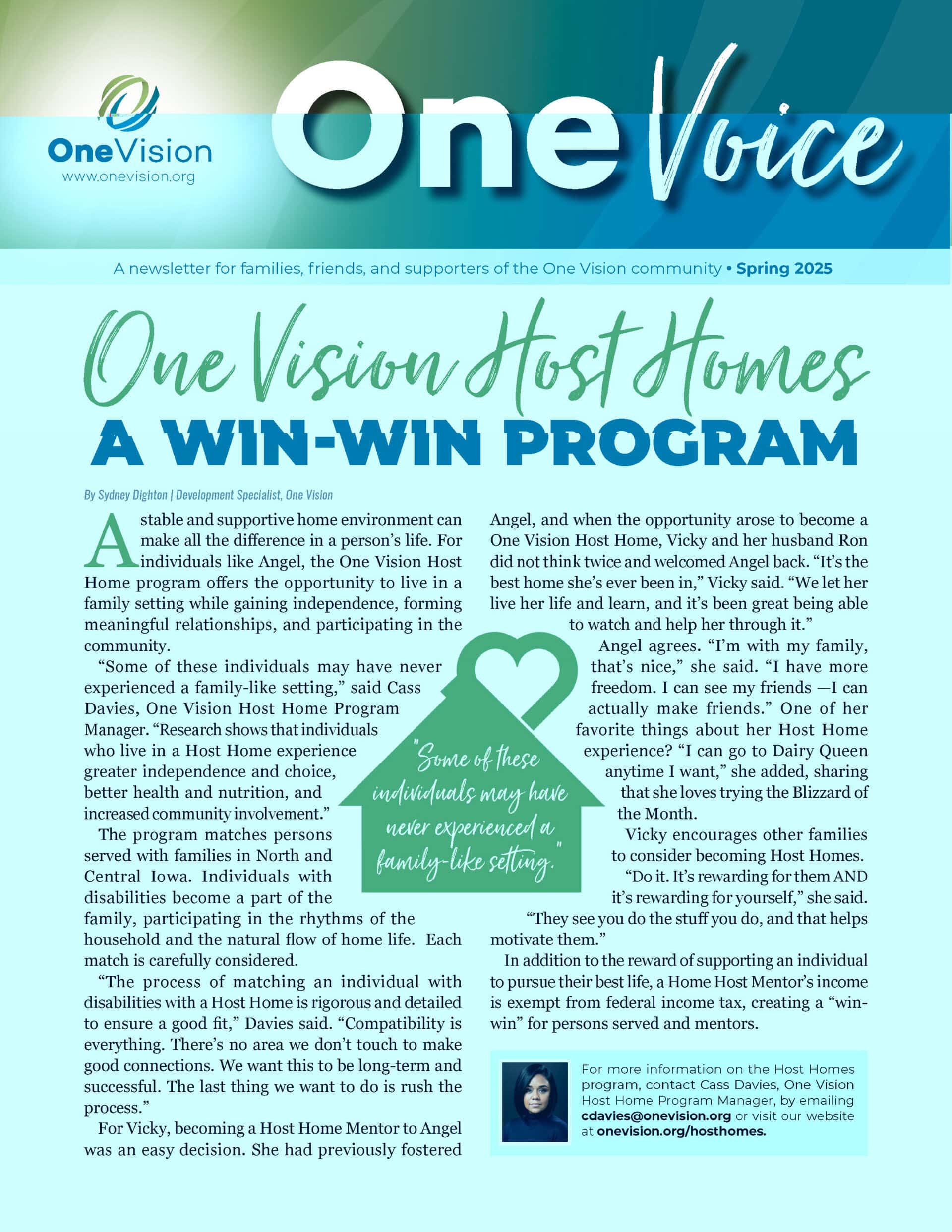Reflecting on the transition to community living
From One Voice: Spring 2024
By Mark Dodd | CEO, One Vision
As I write this Spring One Voice CEO column, I’m reflecting on the past few weeks when the last of the individuals who have lived on the Clear Lake campus moved to homes in the community. Now that the last few individuals have moved out of the Bedrock Intermediate Care Facility for Individuals with Intellectual Disabilities (ICF-IDs), we have completed the transition of services from the Clear Lake campus to community living. Planning for this transition started in 2012, with the first moves happening in 2016. This is a significant milestone for One Vision, and I believe it is important to revisit the reasons behind this transition, given its significance for One Vision, and because we still operate three ICF-IDs in Fort Dodge, which we will be closing over the next two to three years.
Disability Services, just like every other industry, are continuously evolving and progressing. What we consider the “gold standard” of services changes over time. At our inception, Handicap Village was considered a gold standard in Iowa for caring for and supporting individuals with intellectual and developmental disabilities, brain injury, and other disabilities. Our “new” campus-based services were so significant of a change the State had to develop new rules to accommodate our innovative approach, which our first CEO, Don Boyer, helped them draft.
In a twist of irony, the opportunities presented to individuals living in settings like our campus set the stage for that type of congregate living to eventually become outmoded. Not only did individuals thrive in our smaller home-like cottages, but they also demonstrated the capability of even greater independence, community involvement, and inclusion.
As the movement for greater independence, accessibility, and inclusion grew, the passage of the Americans with Disabilities Act (ADA) in 1990 established individuals with disabilities have the right to live in the least restrictive, most community-inclusive setting possible. These rights were upheld and clarified in the Supreme Court ruling known as the Olmsted Decision. While Olmsted secured and clarified these rights, it had been clear for a while that community-based versus facility-based services were “the future.” In fact, One Vision did not build any additional cottages after 1980 and started serving individuals in homes in the communities in 1984, expanding from this single community-based home to our current 33 community-based homes in nine different communities.
To commemorate this milestone, we held a One Day event on March 23rd that celebrated our past and all the incredible opportunities provided to people with disabilities over the years through our innovative and transformational cottage/campus approach to services, AND celebrated our future where people live in smaller settings integrated into our communities!


